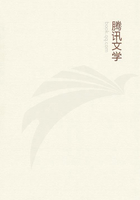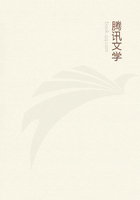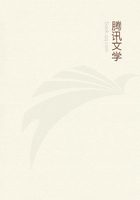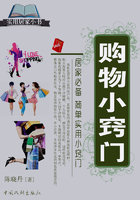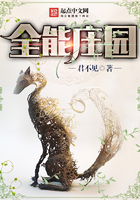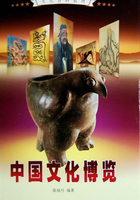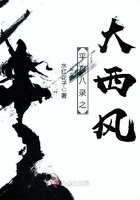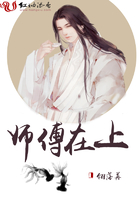THE RUDE Californian rite which we have just considered has a close parallel in the religion of ancient Egypt. The Thebans and all other Egyptians who worshipped the Theban god Ammon held rams to be sacred, and would not sacrifice them. But once a year at the festival of Ammon they killed a ram, skinned it, and clothed the image of the god in the skin. Then they mourned over the ram and buried it in a sacred tomb. The custom was explained by a story that Zeus had once exhibited himself to Hercules clad in the fleece and wearing the head of a ram. Of course the ram in this case was simply the beast-god of Thebes, as the wolf was the beast-god of Lycopolis, and the goat was the beast-god of Mendes. In other words, the ram was Ammon himself. On the monuments, it is true, Ammon appears in semi-human form with the body of a man and the head of a ram. But this only shows that he was in the usual chrysalis state through which beast-gods regularly pass before they emerge as full-blown anthropomorphic gods. The ram, therefore, was killed, not as a sacrifice to Ammon, but as the god himself, whose identity with the beast is plainly shown by the custom of clothing his image in the skin of the slain ram. The reason for thus killing the ram-god annually may have been that which I have assigned for the general custom of killing a god and for the special Californian custom of killing the divine buzzard. As applied to Egypt, this explanation is supported by the analogy of the bull-god Apis, who was not suffered to outlive a certain term of years. The intention of thus putting a limit to the life of the human god was, as I have argued, to secure him from the weakness and frailty of age. The same reasoning would explain the customprobably an older oneof putting the beast-god to death annually, as was done with the ram of Thebes.
One point in the Theban ritualthe application of the skin to the image of the goddeserves particular attention. If the god was at first the living ram, his representation by an image must have originated later. But how did it originate? One answer to this question is perhaps furnished by the practice of preserving the skin of the animal which is slain as divine. The Californians, as we have seen, preserved the skin of the buzzard; and the skin of the goat, which is killed on the harvest-field as a representative of the corn-spirit, is kept for various superstitious purposes. The skin in fact was kept as a token or memorial of the god, or rather as containing in it a part of the divine life, and it had only to be stuffed or stretched upon a frame to become a regular image of him. At first an image of this kind would be renewed annually, the new image being provided by the skin of the slain animal. But from annual images to permanent images the transition is easy. We have seen that the older custom of cutting a new May-tree every year was superseded by the practice of maintaining a permanent May-pole, which was, however, annually decked with fresh leaves and flowers, and even surmounted each year by a fresh young tree. Similarly when the stuffed skin, as a representative of the god, was replaced by a permanent image of him in wood, stone, or metal, the permanent image was annually clad in the fresh skin of the slain animal. When this stage had been reached, the custom of killing the ram came naturally to be interpreted as a sacrifice offered to the image, and was explained by a story like that of Ammon and Hercules.
3. Killing the Sacred Serpent
WEST AFRICA appears to furnish another example of the annual killing of a sacred animal and the preservation of its skin. The negroes of Issapoo, in the island of Fernando Po, regard the cobra-capella as their guardian deity, who can do them good or ill, bestow riches or inflict disease and death. The skin of one of these reptiles is hung tail downwards from a branch of the highest tree in the public square, and the placing of it on the tree is an annual ceremony. As soon as the ceremony is over, all children born within the past year are carried out and their hands made to touch the tail of the serpent's skin. The latter custom is clearly a way of placing the infants under the protection of the tribal god. Similarly in Senegambia a python is expected to visit every child of the Python clan within eight days after birth; and the Psylli, a Snake clan of ancient Africa, used to expose their infants to snakes in the belief that the snakes would not harm true-born children of the clan.
4. Killing the Sacred Turtles
IN THE CALIFORNIAN, Egyptian, and Fernando Po customs the worship of the animal seems to have no relation to agriculture, and may therefore be presumed to date from the hunting or pastoral stage of society. The same may be said of the following custom, though the Zuni Indians of New Mexico, who practise it, are now settled in walled villages or towns of a peculiar type, and practise agriculture and the arts of pottery and weaving. But the Zuni custom is marked by certain features which appear to place it in a somewhat different class from the preceding cases. It may be well therefore to describe it at full length in the words of an eye-witness.
With midsummer the heat became intense. My brother [i.e. adopted Indian brother] and I sat, day after day, in the cool under-rooms of our house,the latter [sic] busy with his quaint forge and crude appliances, working Mexican coins over into bangles, girdles, ear-rings, buttons, and what not, for savage ornament. Though his tools were wonderfully rude, the work he turned out by dint of combined patience and ingenuity was remarkably beautiful. One day as I sat watching him, a procession of fifty men went hastily down the hill, and off westward over the plain. They were solemnly led by a painted and shell-bedecked priest, and followed by the torch-bearing Shu-lu-wit-si or God of Fire. After they had vanished, I asked old brother what it all meant.
'They are going,' said he, 'to the city of Ka-ka and the home of our others.'

